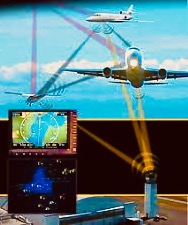Ground Control to Major Dome.
January 30, 2020.
The revelation that Kobe Bryant’s Sikorsky S-76 helicopter lacked a (NTSB-recommended) Terrain Awareness and Warning System (TAWS) issuing audible alarms to help avoid colliding with a ground/mountain obstruction coincides, however tragically, with the FAA’s introduction of a new air traffic control network for U.S. aviation.
introduction of a new air traffic control network for U.S. aviation.
The lesson learned? Information/data shortfalls and blind spots can fatally impact travelers’ lives.
More specifically, this lesson informs the nation’s ATC system overall. Point being, for nearly 80 years, aircraft have been tracked via ground-based radar stations—bouncing radio signals based upon location ‘whereabouts’ fed from pilots down to controllers. In turn, control towers have transmitted their coordinates and directives as much as 15 minutes apart.
The ADS-Bs of ATC.
But as of January 1, 2020, the FAA requires that airplanes and helicopters have GPS-traceable transponders onboard. GPS tracking is considered faster, more pinpoint accurate than radar. Especially so now that supplier Aerion Corporation’s satellites are being launched and will be fully tested by U.S. regulators in March.
This ‘dome’ of navigation satellites is designed to comprise an Automatic Dependent Surveillance Broadcast (ADS-B) system providing continuous real-time identification, location, altitude, velocity and heading of all aircraft flying into controlled airspace.
The U.S. controls 29.4 square miles of airspace, including vast swaths of the Atlantic and  Pacific Oceans, and Gulf of Mexico. The FAA claims ADS-B will enable aircraft to fly more direct routes therein—significantly saving time and fuel—while increasing aggregate airspace capacity by safely shrinking ‘bumper’ intervals necessary between craft in flight.
Pacific Oceans, and Gulf of Mexico. The FAA claims ADS-B will enable aircraft to fly more direct routes therein—significantly saving time and fuel—while increasing aggregate airspace capacity by safely shrinking ‘bumper’ intervals necessary between craft in flight.
Some 100,000 airplanes and helicopters have already adopted the transponders (or are scrambling to do so), as have 60% of general aviation/private planes. Backstopping that, existing ground radar stations will continue to be utilized.
Sounds promising thus far. Alas, ADS-B precision and efficiencies cannot so easily remedy the problem of finding ground gates once these aircraft land and taxi back to airport concourses—where dreaded conga lines still rule, far as the eye can see. So we’ll see how it all stacks up, March onward. (MTC…)![]()
